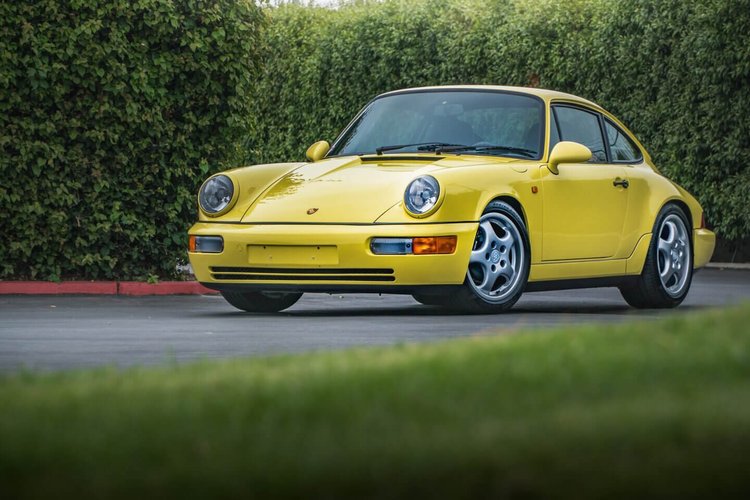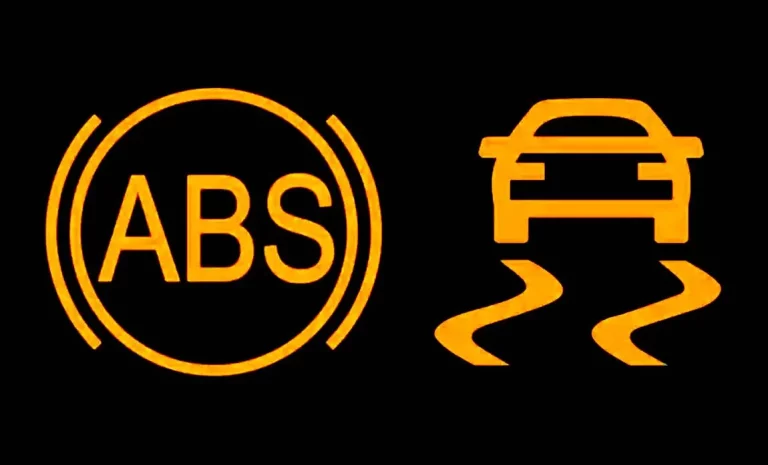Suicide Doors: Why Are They Called That?
Suicide doors, a distinctive feature of some vintage cars, have a name as intriguing as their design. Originating from a time before modern safety standards, these rear-hinged doors are steeped in automotive history and physics. The moniker “suicide doors” reflects the potential hazard they pose when opened at high speeds or accidentally, due to their design and the absence of seat belts. In this guide we will find out why they’re called suicide doors, exploring their design and the risks associated with them.

Why Are They Called Suicide Doors?
The term “suicide doors” refers to car doors that are hinged at the rear rather than the front, opening from the leading edge. This design contrasts with the more common front-hinged doors and has earned a somewhat morbid nickname due to the additional safety risks it historically presented.
Reasons they are called suicide doors:
-
Safety Risks When Opening: If one of these doors were to be opened while the car was moving, the airflow would catch the door, potentially pulling it fully open. This could lead to passengers being ejected from the moving vehicle, especially in the days before seat belts were standard.
-
Difficult to Close from Inside: The rearward hinge design makes these doors more challenging to close from inside the car. This could potentially lead to doors being accidentally left ajar, increasing the risk of them opening while driving.
-
Increased Accident Risk in Traffic: Exiting and entering the vehicle is more hazardous with suicide doors, especially when parked on the street side. The door opens toward the oncoming traffic, which can be dangerous in busy areas, as it increases the risk of the door being hit by passing vehicles.
The design was originally implemented for aesthetic and accessibility reasons, offering a more dramatic opening and easier access to the rear seats in larger vehicles. However, the potential hazards led to the grim nickname. Despite the risks, this style of door has seen a resurgence in some modern luxury vehicles, where they add a touch of elegance, and the safety issues are mitigated by advanced technology like automatic locking mechanisms that prevent the doors from opening while the vehicle is in motion.
Different Types of Suicide Doors
Suicide doors, known for their rear-hinge design, come in several variations, each offering a unique approach to car entry and exit. Here’s a look at different types of suicide doors:

1. Standard Suicide Doors
These are the basic form of suicide doors where the hinges are located on the rear edge of the door, allowing it to open from the front. This design was commonly found in older vehicles and is often associated with classic luxury cars.
2. Coach Doors
Also referred to as “coach doors,” these are essentially suicide doors that are used in pairs, without a central B-pillar. This setup allows for a wide opening, making it easier to access the interior, particularly the rear seats. Rolls-Royce is well-known for using coach doors on some of their luxury models.
3. Freestyle Doors
These doors are found on some extended cab trucks and small cars. The rear suicide door cannot be opened unless the front door is opened first, providing structural integrity while still allowing easier access to the back seats. The Mazda RX-8 featured this type of door design.
4. Suicide Scissor Doors
A rare variation, these doors combine the rear-hinge mechanism with a scissor action, allowing the door to open both upwards and outwards. This type is more for show and can be seen on some custom or high-end luxury cars where conventional doors might be impractical due to design constraints.
5. Hidden Suicide Doors
Some cars incorporate a suicide door setup without the typical visible door handles, giving the car a sleeker look with seamless lines. These doors usually rely on electronic mechanisms for opening and can be seen in modern car designs that emphasize minimalism and smooth contours.
Pros And Cons of Suicide Doors
Suicide doors, also known as rear-hinged doors, offer a unique aesthetic but come with some drawbacks compared to traditional car doors. Here’s a breakdown of the pros and cons:

Pros:
1. Style and Entrance: Suicide doors create a dramatic entrance and exit, especially for rear passengers. This can be particularly appealing for luxury cars.
2. Easy Access: The wider opening allows for easier entry and exit, especially for people with limited mobility or for installing child car seats.
3. Increased Space: The lack of a B-pillar (center pillar) can create a more spacious and airy feel in the cabin.
Cons:
1. Safety Concerns:
- Ejection Risk: There’s a higher risk of occupants being ejected during a side-impact collision if the door isn’t properly shut.
- Reduced Structural Strength: The lack of a B-pillar can make the car less rigid and stable in a crash.
2. Impracticalities:
- Parking Challenges: Suicide doors require more space to open fully, making tight parking situations tricky.
- Awkward Entry/Exit: Using both front and rear doors simultaneously can be difficult for passengers, especially in confined spaces.
3. Other Considerations:
- Limited Availability: Cars with suicide doors are less common, making them harder to find and potentially more expensive.
- Cost: The additional engineering and design work can increase the car’s overall price.
How Are Suicide Doors Legal?
You might be surprised to learn that the legality of suicide doors depends on the regulations of a particular country and the implementation of safety features. Here’s why:
1. Historical Context: In the past, suicide doors were a common design element. However, their tendency to fly open due to airflow at speed, especially before seat belts were standard, presented a significant safety hazard. This is where the name “suicide door” originated.
2. Modern Regulations: Many countries, including the United States, have regulations set by organizations like the National Highway Traffic Safety Administration (NHTSA) that require additional safety measures for vehicles with suicide doors. These measures might include:
- Stronger door locks: To prevent accidental opening while driving.
- Automatic door checks: Mechanisms that ensure the door is securely latched before the car can move.
- Door sill warning lights: Lights that indicate if a door is ajar.
3. Safety Features Mitigate Risk: With these additional safety features, the risk of accidental ejections associated with suicide doors is significantly reduced. This allows them to be legal as long as they meet the required safety standards.
4. Not Universally Legal: It’s important to note that some countries may have stricter regulations or completely ban suicide doors. It’s always best to check the regulations in your specific location.
So, suicide doors themselves aren’t inherently illegal, but they must meet safety requirements to be legal on the road.
Popular Cars With Suicide Doors
Here are some popular cars with suicide doors throughout history:
- Rolls-Royce Phantom: This epitome of luxury has sported suicide doors since its inception.

- Lincoln Continental: Particularly known for the suicide doors featured in the 1961-1969 Continental models, these Lincolns offered a touch of class.

- Mazda RX-8: This sporty coupe had rear-hinged doors that made it easier to enter and exit the back seats, a unique feature among sports cars.

- BMW i3: This quirky electric hatchback embraced suicide doors to create a more spacious and futuristic feel.

- Honda Element: This boxy SUV offered a unique combination of functionality and style, with suicide doors that made it easy to load cargo.

- Mini Cooper Clubman: This quirky take on the classic Mini Cooper featured a third “club door” on the passenger side that opened like a suicide door, providing extra access to the rear seat.

Frequently Asked Questions
Why are suicide doors known for their safety risks?
In the past, suicide doors were considered dangerous due to their aerodynamic properties. At high speeds, an unlocked door could swing wide open, potentially causing passengers to be ejected from the vehicle. This, along with the absence of seat belts in older vehicles, contributed to their safety risk perception.
What makes suicide doors appealing despite their past safety concerns?
Today, suicide doors are typically found in luxury vehicles like the BMW i3, Lincoln Continental, and Rolls-Royce Dawn. They offer a unique aesthetic appeal and functionality, providing a wider entry space and exclusivity, while improved locking mechanisms and crash tests enhance passenger safety.
Are suicide doors illegal in modern vehicles?
Contrary to popular belief, suicide doors are not illegal in modern cars. They are, however, quite rare due to their controversial past. Modern vehicles with suicide doors typically incorporate advanced safety features to mitigate past concerns.
Why are suicide doors referred to as butterfly doors?
The terms “suicide doors” and “butterfly doors” are often used interchangeably, though they are different. The term “butterfly doors” originated from the design’s potential to cause accidental ejections in moving vehicles, similar to how a butterfly can be easily swept away by the wind.
How have suicide doors evolved over time?
Modern auto manufacturers, like BMW, Lincoln, and Rolls-Royce, have reintroduced suicide doors in their models by incorporating advanced safety features. These features, combined with rigorous crash tests, seek to address past safety issues, infusing these doors with contemporary safety standards and consumer needs.

Hi! I’m Larry Gibbs, studying mechanical engineering with a focus on cars. I really love Ferraris and write blog posts about the latest car stuff. When not studying or blogging, I’m usually on a road trip exploring new places. I also enjoy playing football and watching movies. Life’s an adventure, and I’m all about enjoying the ride!






